Ijuhya vitellina sp. nov., a novel source for chaetoglobosin A, is a destructive parasite of the cereal cyst nematode Heterodera filipjevi
- PMID: 28700638
- PMCID: PMC5507501
- DOI: 10.1371/journal.pone.0180032
Ijuhya vitellina sp. nov., a novel source for chaetoglobosin A, is a destructive parasite of the cereal cyst nematode Heterodera filipjevi
Abstract
Cyst nematodes are globally important pathogens in agriculture. Their sedentary lifestyle and long-term association with the roots of host plants render cyst nematodes especially good targets for attack by parasitic fungi. In this context fungi were specifically isolated from nematode eggs of the cereal cyst nematode Heterodera filipjevi. Here, Ijuhya vitellina (Ascomycota, Hypocreales, Bionectriaceae), encountered in wheat fields in Turkey, is newly described on the basis of phylogenetic analyses, morphological characters and life-style related inferences. The species destructively parasitises eggs inside cysts of H. filipjevi. The parasitism was reproduced in in vitro studies. Infected eggs were found to harbour microsclerotia produced by I. vitellina that resemble long-term survival structures also known from other ascomycetes. Microsclerotia were also formed by this species in pure cultures obtained from both, solitarily isolated infected eggs obtained from fields and artificially infected eggs. Hyphae penetrating the eggshell colonised the interior of eggs and became transformed into multicellular, chlamydospore-like structures that developed into microsclerotia. When isolated on artificial media, microsclerotia germinated to produce multiple emerging hyphae. The specific nature of morphological structures produced by I. vitellina inside nematode eggs is interpreted as a unique mode of interaction allowing long-term survival of the fungus inside nematode cysts that are known to survive periods of drought or other harsh environmental conditions. Generic classification of the new species is based on molecular phylogenetic inferences using five different gene regions. I. vitellina is the only species of the genus known to parasitise nematodes and produce microsclerotia. Metabolomic analyses revealed that within the Ijuhya species studied here, only I. vitellina produces chaetoglobosin A and its derivate 19-O-acetylchaetoglobosin A. Nematicidal and nematode-inhibiting activities of these compounds have been demonstrated suggesting that the production of these compounds may represent an adaptation to nematode parasitism.
Conflict of interest statement
Figures

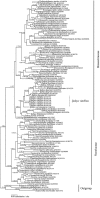

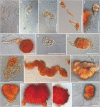
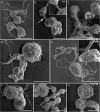
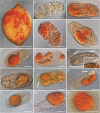
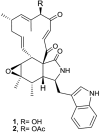
References
-
- Kühn J. Vorläufiger Bericht über die bisherigen Ergebnisse der seit dem Jahre 1875 im Auftrage des Vereins für Rübenzucker-Industrie ausgeführten Versuche zur Ermittlung der Ursache der Rübenmüdigkeit des Bodens und zur Erforschung der Natur der Nematoden. Z Ver Rübenzucker-Ind. 1877;27:452–7.
-
- Stirling GR. Biological control of plant-parasitic nematodes: soil ecosystem management in sustainable agriculture Second Edition ed. Stirling GR, editor. Wallingford, UK: CABI; 2014. xxiv + 510 p.
-
- Goffart H. Untersuchungen am Hafernematoden Heterodera schachtii Schm. unter besonderer Brücksichtigung der schleswig-holsteinischen Verhältnisse I. Arbeiten aus der Biologischen Reichsanstalt für Land- und forstwirtschaft Berlin-Dahlem. 1932;20:1–28.
-
- Kerry BR. A fungus associated with young females of the cereal cyst-nematode, Heterodera avenae. Nematologica. 1974;20(2):259–61. doi: 10.1163/187529274x00230 - DOI
-
- Kerry BR, Crump DH. Two fungi parasitic on females of cystnematodes (Heterodera spp.). Transactions of the British Mycological Society. 1980;74(1):119–25.
MeSH terms
Substances
LinkOut - more resources
Full Text Sources
Other Literature Sources
Molecular Biology Databases

